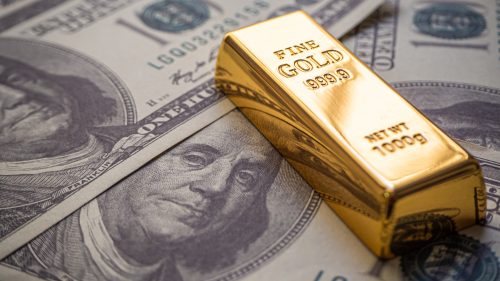
The first quarter of 2022 saw physical demand for gold jump 34% YoY to a total of 1,234 tonnes – according to the World Gold Council – the highest since Q4 2018 and 19% above the five-year average of 1,039 tonnes. . Physical gold demand typically picks up when investors are seeking a safe haven from volatile markets and economic uncertainty, its value frequently changes in the opposite direction of the stock market or economic movements. This was certainly the case in the first quarter of 2022, as soaring inflation rates pummeled other investment vehicles and sent investors scrambling for gold.
The Fed’s current path of raising interest rates is seen by many analysts as inadequate to dampen inflation. This has led investors to hedge their losses by buying physical bullion, gold ETFs and futures. The yellow precious metal has struggled to gain consistent momentum in the past month, however, the long-term trend suggests a secular bull run actually began in 2015 to present, with further upside potential. As long as the world continues to see mounting economic risk and market volatility amid the war in Ukraine, gold will remain a top performer.
It goes without saying that the gold mining industry benefits from this demand, as higher gold prices spur production and increased exploration activity. This, in turn, creates jobs and drives economic growth. Demand for physical gold is also a key stimulus for the jewelry industry. The first quarter of 2022 saw a significant rise in demand from the jewelry as well as investment sectors. Gold explorers like Trillium Gold (TSXV:TGM), a junior exploration company focused on developing gold projects in the Red Lake Mining District of Ontario, Canada, have seen a boost in interest due to the favourable jurisdiction. The company has also recently announced drill results from its Gold Centre property, which sits just 350 metres from the world-class Red Lake operations with production to date of more than 25 million ounces of high-grade gold. The company believes that the southeast dipping mine trend extends onto its Gold Centre property, a potentially valuable windfall if proven correct.
Alongside the increased demand for physical gold was one of the largest quarterly inflows for gold ETFs. The last year gold ETF holdings rose this much was in 2020, during the worst of the economic fallout from the pandemic. ETF holdings increased by up to 269 tonnes in the first quarter. While 2021 saw outflows of 174 tonnes, the increase in the first quarter replaced all of 2021’s loss in a single three-month period.
Part of the reason gold ETFs and physical gold are receiving so much attention is that despite the Fed’s aggressive rate hikes to curb inflation, investors don’t see it being enough. The Fed is being regarded as behind the curve, with many commenting now that a major recession in the U.S. economy is possible, and other global economies likely to follow.
Investors must balance a series of risks not to mention assess the overall health of the global economy when making their decisions. However, a strong labour market showing low unemployment and high savings rates continue to be positive.
In early March, gold reached $2,050 per ounce, but has since pulled back from those gains. As investors watch the unfolding situation, gold explorers continue to advance projects that could become tomorrow’s producing mines, worth hundreds of millions if not billions to investors.
For now, it seems that gold is still the safe haven of choice. With all the uncertainty, demand for gold should remain high in the coming quarters.
Interesting Related Article: “What is gold? Is gold a good investment?“

